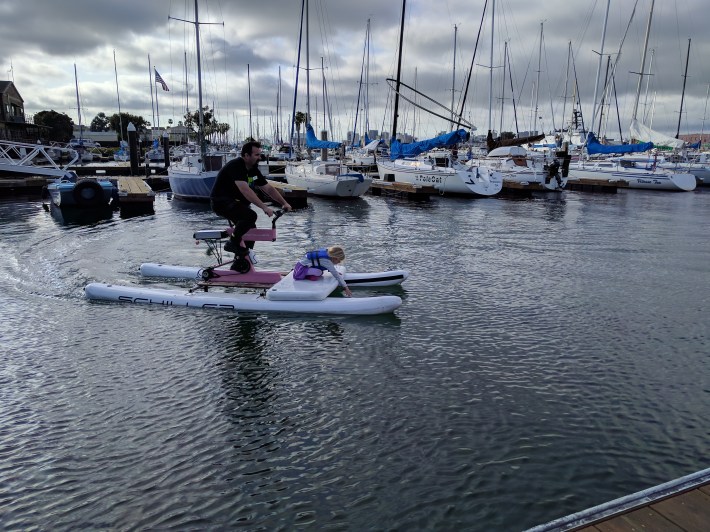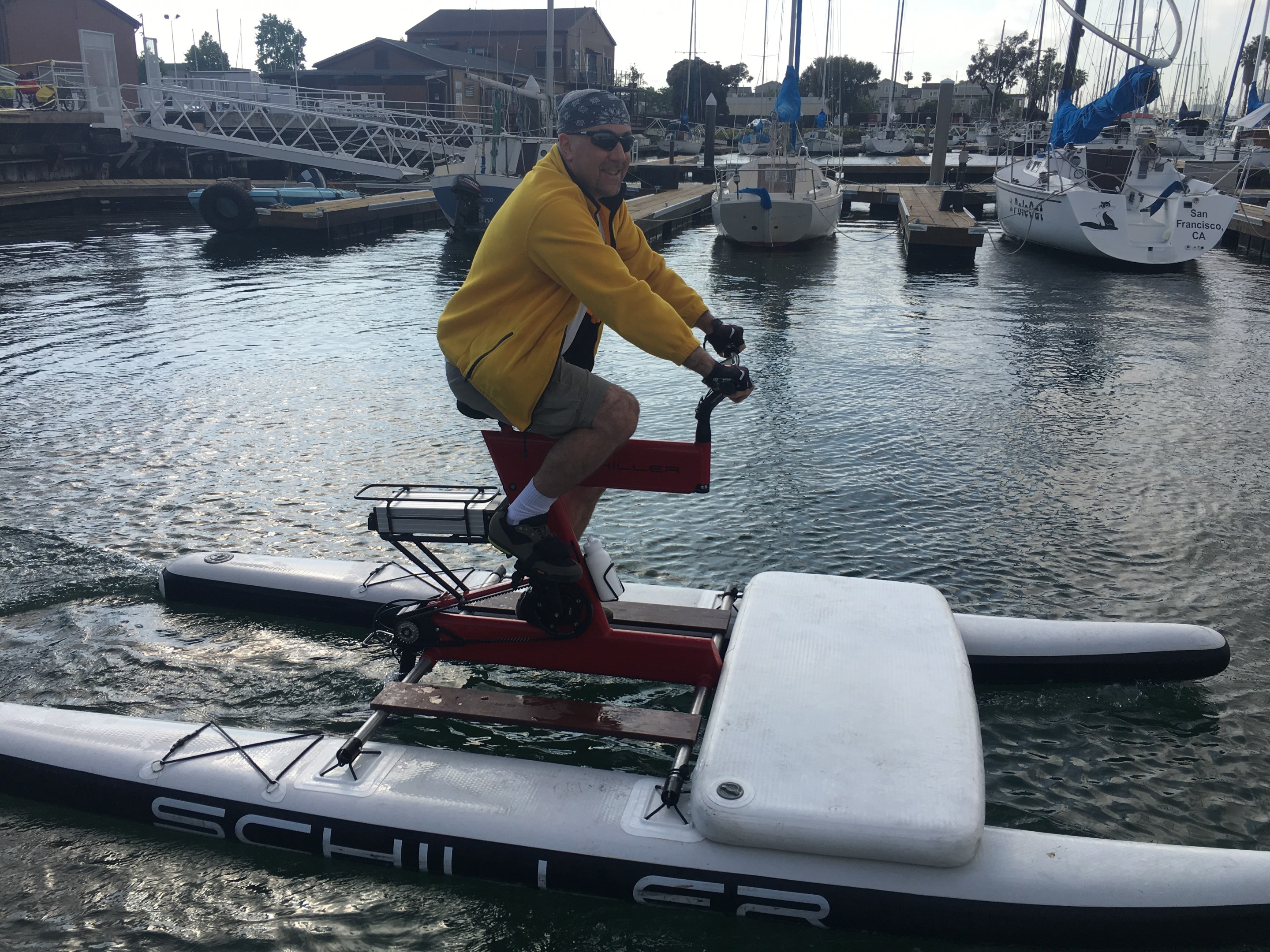Some of us finished Bike to Work Day by taking a bike ride on the water.
Thursday evening the advocates at Bike Walk Alameda held a Bike to Work Day celebration at the Alameda Marina, about midway between the Posey Tubes and the Park Street Bridge, and directly across the estuary from Coast Guard Island. By bike, the trip to or from Oakland to this location takes fifteen minutes.
Unless you've got a water-bike. Then it takes two minutes.
Bike Walk Alameda's big dream is to establish a bicycle and pedestrian lift bridge to connect the burgeoning housing developments of Western Alameda with Jack London Square. That way, there would be a bike and pedestrian crossing on both ends of the island. Until then, the only option on the western end is the hellscape of the Posey tube. But maybe the electric-assist water-bike pictured in the lead image would be a good interim measure? We've written briefly about them before, but last night was our first opportunity to take one for a spin.
So after covering Bike to Work in San Francisco, I went once more unto the breach of the Posey Tube, and rode to the Alameda Marina to try one out.
Jessica Schiller, the founder of the company, warned me that it can't be steered if you're not applying power. As I jumped on the contraption, that became very apparent--it's a boat with an exercise bike on top of it, after all, so it still handles like a boat. That means if it doesn't have some forward power, not just momentum, the rudder is nearly useless. Because its rider is sitting on a bike and pedaling, the reflex is to lean a bit as one would with a bike. But that doesn't do anything, since the long pontoons keep it pretty much perfectly vertical. Instead, it's a matter of pedaling and turning and waiting for the rudder to slowly change your direction.
It takes a moment to get comfortable with all that. Then again, it takes a while to get used to a scooter, and here there's no danger of getting dumped onto the concrete. Schiller says the pontoons make it impossible to turn the thing over (and that was one test I wasn't going to attempt). But if falling into the water is your fear, remember there also are no car doors to worry about, or Ubers blocking the bike lane, or other motorists roving around presenting a continual threat; riding a water-bike is relaxing. With the giant pontoons, it's also not a big deal if you bump into something--as I did a few times with the dock. It just skids off it gently.
It's also surprisingly fast with the electric assist motor engaged. Without it, though, it's still perfectly usable on leg power alone. And given the large number of cyclists in the Bay Area, there's a big, uh, pool of riders who already have the right muscles developed to make it move.
Schiller said she is planning to add a box on the front platform (where the little girl is sitting in the picture below) so riders can bring their regular land bikes with them. Of course, the challenge of using these machines for an estuary crossing is getting the infrastructure set up--as with scooters and bike share, somebody's going to have to look after the water-bikes and make sure they get 'balanced' on either end.
Still, with the help of a few venture capitalists and some GPS and a supporting phone app, it's hard to see why this can't be a way to get around short watery obstacles, such as the estuary channel. In fact, I couldn't help but wonder if there isn't room for other, more standard small water craft in the transportation mix, such as small water taxis or even shareable dinghies.
In fact, given how lovely it was to ride around on the water, especially compared to riding in the noxious hell-hole of the tubes, it was tempting to just to take the Schiller bike back home to Oakland. But I'm too honest for that... plus I'd left my trusty land bike/steed as collateral.






